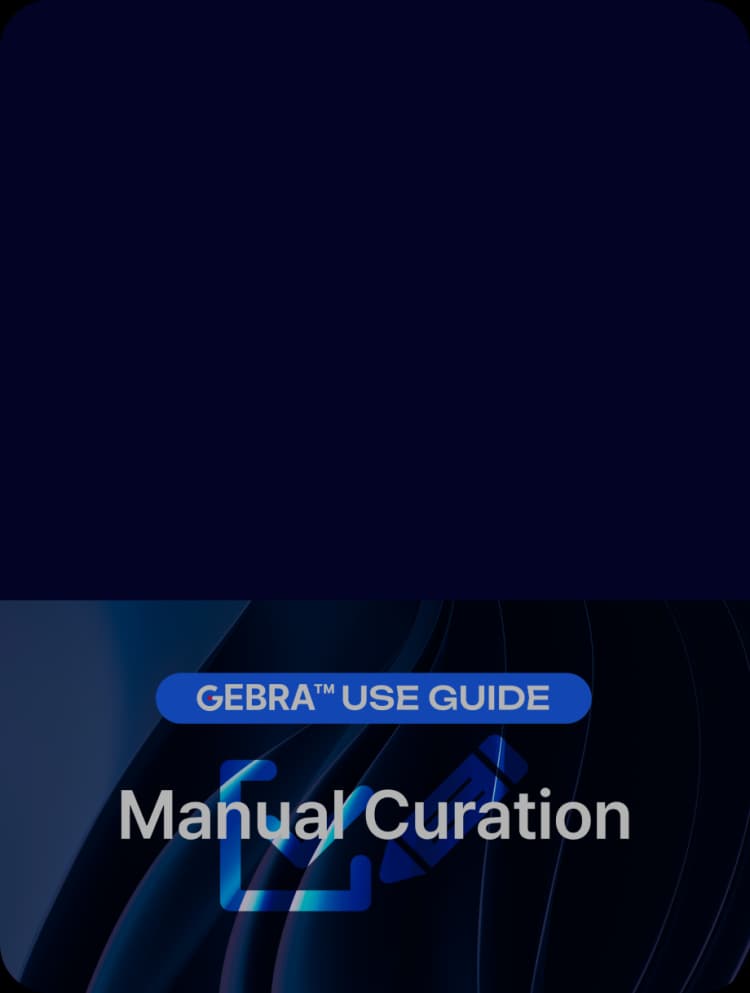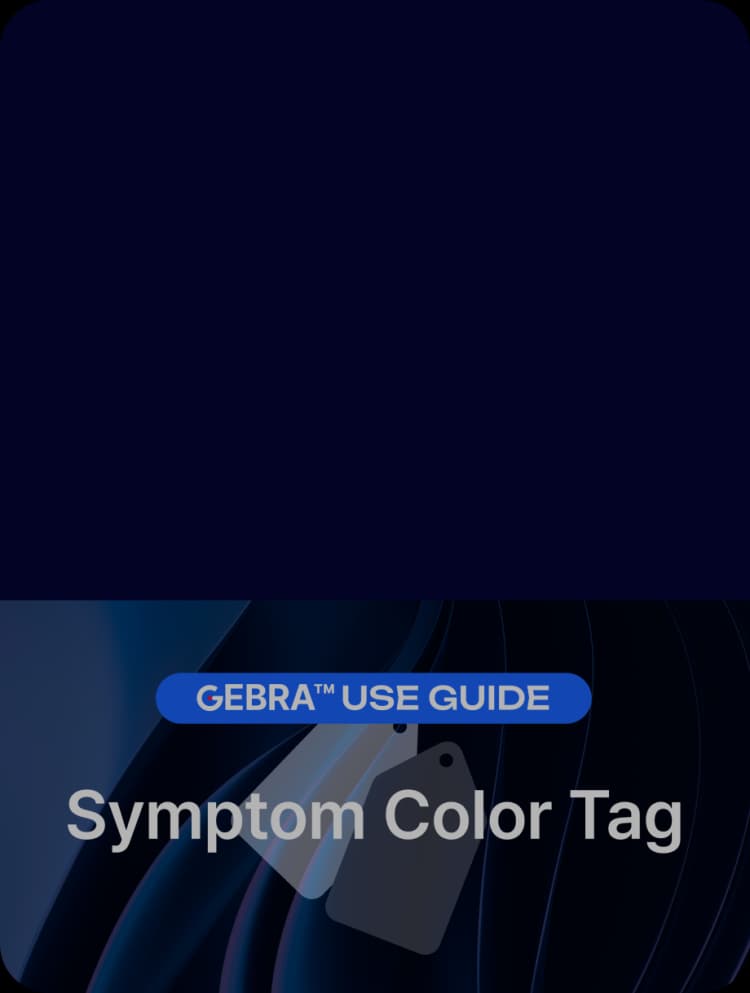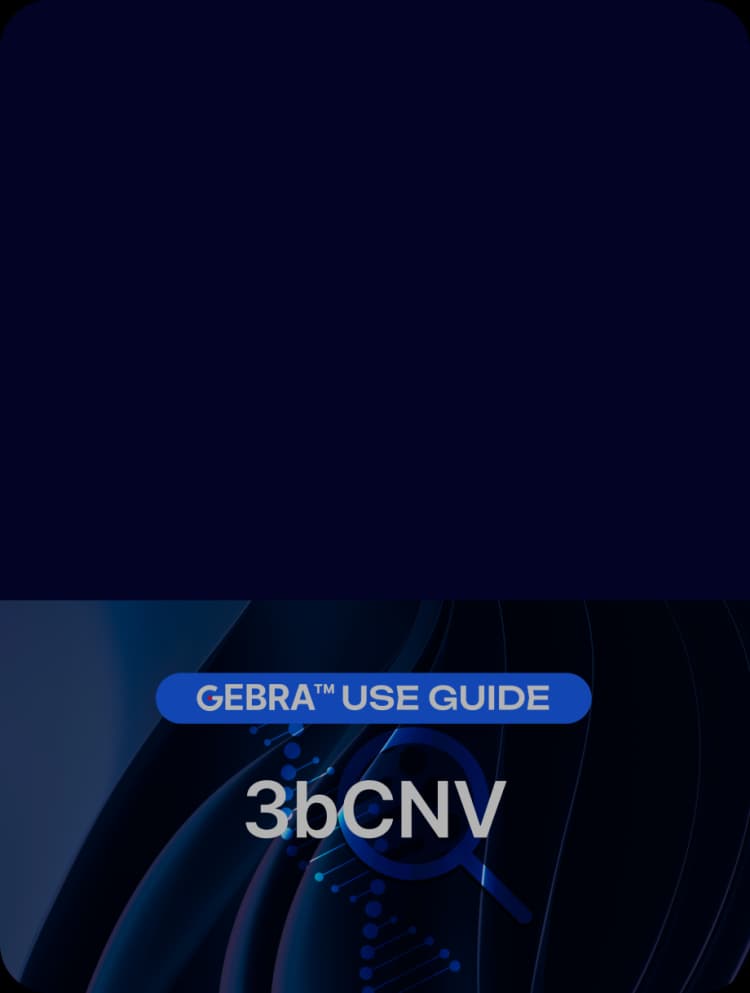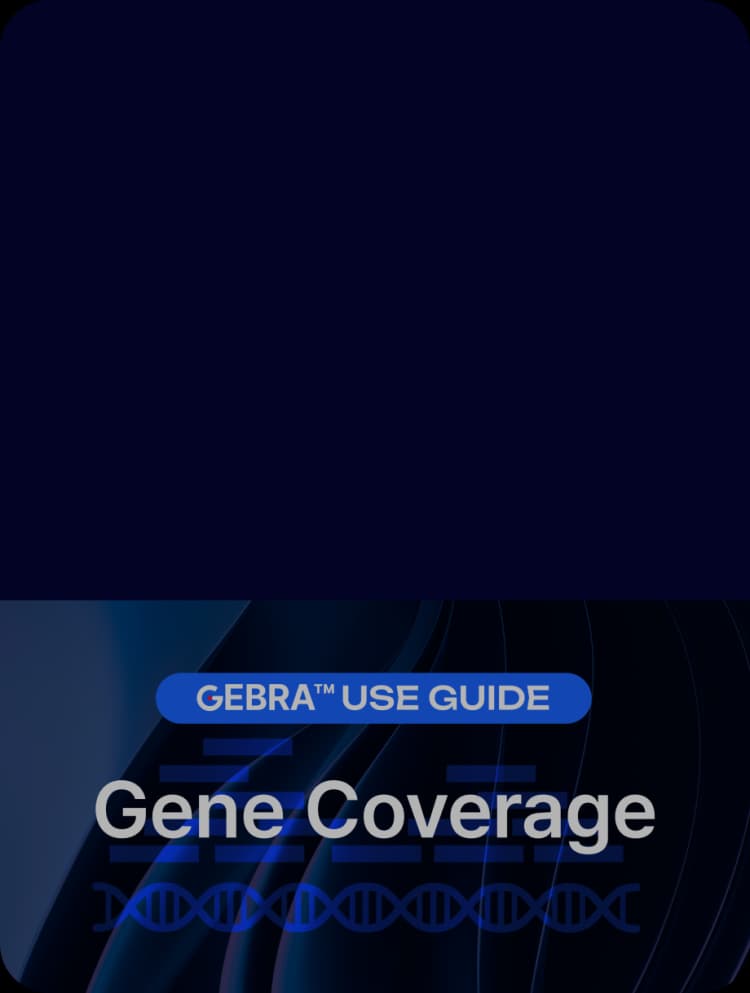GEBRA™ Use Guide: 3ASC – Finding the One Causal Variant Among Thousands
- Product | 25. 10. 21

“Which one is the real cause?”
If you’ve ever opened a WES result and felt overwhelmed, you’re not alone.
Thousands of variants appear in a single VCF file—hundreds remain even after filtering.
You check each one’s population frequency, cross-reference ClinVar, then OMIM…
and realize you’ve spent your entire morning searching for just one answer.
3ASC was built to eliminate that struggle.
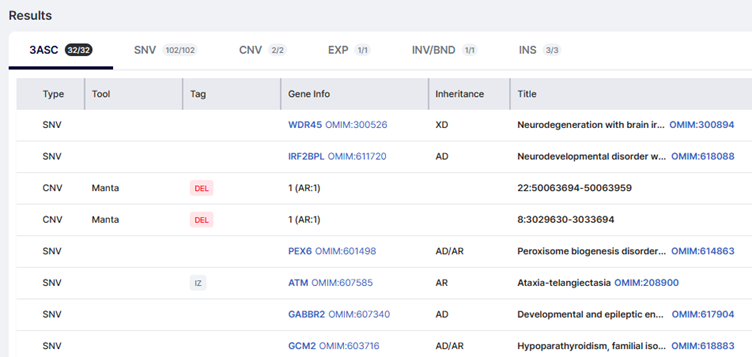
By automatically prioritizing clinically meaningful variants based on ACMG criteria, it classifies each sample into High, Mid, and Low tiers— so you can focus only on what truly matters.
With 3ASC, interpretation time drops from 2–4 hours to under 10 minutes.
99% Accuracy, Backed by Clinical Data
3ASC isn’t just an AI recommender—it automates every check you normally perform manually.
It simultaneously evaluates:
- In silico predictions (CADD, REVEL)
- Quality metrics (read depth, mapping quality, allele balance)
- False-positive risk (sequencing artifact regions)
- Inheritance model consistency with patient phenotype
- Population frequency from gnomAD and other global databases
- Phenotype-genotype match based on HPO terms
- ACMG/AMP classification automatically applied
According to 3billion’s internal validation data,
the true causal variant appears in the High or Mid tier 99% of the time.
In practice, this means:
| Method | Variants to review | Average time |
| Conventional workflow | 300–500 variants | 2–4 hours |
| With 3ASC | 10–20 variants | 10 minutes |
That’s a 95% reduction in manual review load—
and a significant drop in fatigue and potential human error.
See Everything at a Glance
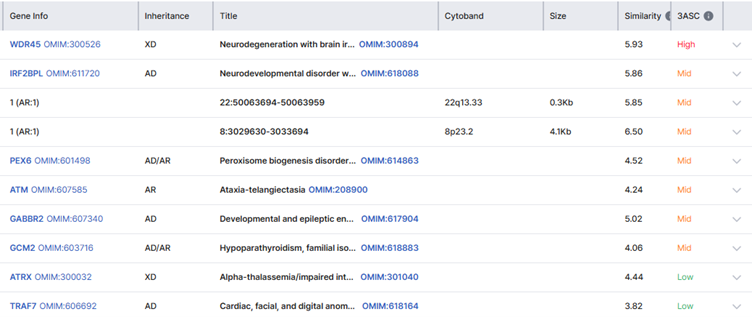
When you open the 3ASC tab in GEBRA, variants are automatically organized into three intuitive tiers.
Clicking any variant displays all key information at once—
gene, disease, inheritance pattern, ACMG classification, population frequency, and more.
No more switching between tabs or databases.
Everything you need for clinical judgment is right in front of you.
“Can I really trust AI in clinical interpretation?”
That’s a fair question.
In genomics, interpretability is everything—a black-box AI is never enough.
That’s why 3ASC is built as Explainable AI (XAI).
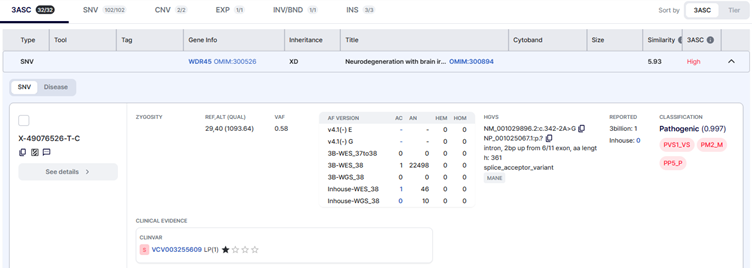
For each variant, you can see:
- Which ACMG criteria (e.g., PS1, PM2, PP3) were met
- How each feature contributed to the overall score
- The underlying evidence that determined ranking
This transparency allows you to clearly explain the reasoning behind results
—whether in a molecular board meeting or in CAP/CLIA-compliant reporting.
How Clinicians Use 3ASC
“Now I can review five samples before lunch, not just one.”
Typical workflow:
- Open the 3ASC tab after analysis is complete.
- Review High-tier variants first.
- Click each variant for detailed evidence.
- If clinical symptoms have changed, add them to trigger automatic reanalysis.
- Check the Mid-tier&Low-tier for additional review candidates.
No complex setup. No repetitive filtering.
Just a streamlined process that lets you move from data to diagnosis faster.
Beyond Automation — Augmenting Clinical Judgment
3ASC doesn’t replace clinical expertise—it amplifies it.
It gives you the freedom to spend less time filtering and more time thinking.
The goal isn’t to automate your decision.
It’s to help you reach it faster—with confidence and clarity.
That’s what 3ASC is built for:
to help every clinician deliver better answers, sooner.
Summary
- Purpose: Streamline interpretation while maintaining clinical transparency
- Feature: AI-powered variant prioritization
- Key Benefit: 80% reduction in variant review time
- Accuracy: 99% inclusion of causal variants in High/Mid tiers
Learn More
Discover how GEBRA’s integrated interpretation system combines AI and human expertise.
Take a look at all GEBRA™ Related Articles:
- GEBRA™ Use Guide: 3ASC – Finding the One Causal Variant Among Thousands
- GEBRA™ Use Guide: Symptom-driven Update — When Phenotypes Evolve, Your Shortlist Should Too
- GEBRA™ Use Guide: Filters – See What Matters, Faster
- GEBRA™ Use Guide: Knowledge Base – Interpretations That Persist, Diagnoses That Compound
- GEBRA™ Use Guide: Gene Coverage – Diagnostic Confidence Starts with Coverage
- GEBRA™ Use Guide: 3bCNV – From Copy Number Variant Detection to Clinical Interpretation
- GEBRA™ Use Guide: Symptom Color Tag
Do you find this post helpful?
Click the button below to copy and share the link.

3billion Inc.
3billion is dedicated to creating a world where patients with rare diseases are not neglected in diagnosis and treatment.



